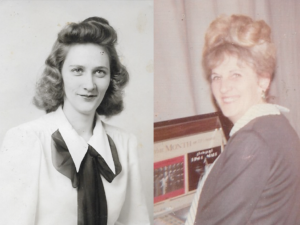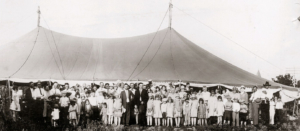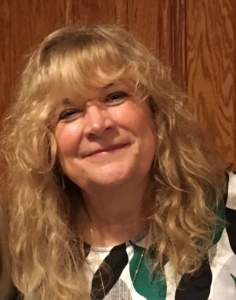Compelling Characters – In life and In Stories

Granddad – A Man of Great Character.
What do a Pentecostal minister, a hobbling chicken, and a German immigrant have in common?
Me! The minister was my maternal grandfather, the chicken was a family pet, and Mr. Wagner was my flute teacher.
Another shared aspect was their ability to sometimes completely baffle me.
During Granddad’s charismatic sermons held in huge revival tents, he spoke in tongues, which sounded like gobbledygook. Jocko, the chicken whose leg bore an inoperable leg tumor, squawk-conveyed his craving for bologna bits in a way only my little brother could understand. And while I eventually got used to Mr. Wagner’s heavy accent, I still got lost when he intermixed German and English words during our lessons. He pretended not to notice my cocked head, but his dancing eyes declared that he enjoyed keeping me on my toes.
A third – and perhaps most important – connection between Granddad, Jocko, and Mr. Wagner was that I found them highly fascinating, alluring, and unforgettable. For a kid who compulsively read, created, and told tales, these fellows appealed to my imaginative, quirky side and explained why, when I became a children’s/young adult author, they worked their way into my stories.
In other words, they were, for me, compelling characters.
Phonetically, this phrase carries a punch, but what does it mean?
Reference books describe the word “character” as a differentiating mark or letter in writing, and also as a person’s multifaceted mental, physical, and/or ethical traits. For use in literature, a character is someone purposefully featured in a story onto whom certain attitudes, qualities, and personalities are grafted to help push the plot forward.
My mom had a peculiar attachment to this word, character. She frequently labeled people as characters of sundry sorts, based on how she gauged their particular attributes. Granddad was a man of “great character” who loved and served God and mankind. Before Mom entrusted me to Mr. Wagner’s care in grade school, she determined that he was of “fine moral character.” She branded Jocko simply as “goofy.”
In explaining the word “compelling,” various resources agree this means captivating, enthralling, mesmerizing, arousing interest, inducing admiration, able to persuade, and urgently demanding notice. In other words, compelling persons are extraordinary, remarkable, potent.

Mom – The Queen of Characterization
Mom fit all of these adjectives. At five foot four, hair ever coiffed, eyes flashing or flaming, she was larger than life. In the course of raising a family, teaching English, and coordinating fundraisers, she was often found cracking a joke, cracking the whip, or cracking characters. Not everyone got her five-star “Well, now, there’s a character for you!” remark. But most people she interacted with got some sort of probing appraisal.
Her friend Grace was of the “highest character” (a finding I endorsed since she constantly complimented me), while the guy who lived in the house behind us was a “shady character” (and thus I sprinted when I cut through his yard). The door-to-door salespersons who got through the front door with their Kirby sweepers and Fuller Brush mops were “admirable, hard-working characters,” but the hucksters with the shifty smiles got door-slammed for being of “questionable character.”
Mom also assessed her kids. She pushed us to be of “good character” (possessing virtues such as integrity, fairness, and benevolence). She narrowed her eyes if we suddenly acted “out of character” (i.e., doing chores without being told, giving her affection for no good reason). She cautioned us against doing things that could “mar our character.”
She considered me paradoxical, as in smart but sassy (Like mother like daughter!), caring but contentious (I won my fight to keep our growing, crowing chick despite our peevish neighbors!), and humorous but headstrong (Sister-matching outfits should be outlawed!). I suppose, to her, this somehow made me interesting, though challenging to deal with.
I cringed when Mom appraised people to their faces (“Now, aren’t you the thoughtful/clever/bossy one!”) and didn’t always agree with her characterizations. But sometimes she was spot on. The neighborhood dogcatcher, who was also on the lookout for loose chickens, was definitely “despicable.”
Mom’s watchfulness of others, her propensity for making depictive judgments, and the idioms and phrases she used when expressing character types, taught me to pay close attention to people – to truly see them in their glorious three-dimensionality, and remember them.
I reckon that’s why it’s been easy for me, as a writer, to endlessly create and describe story characters.
***
You can start a story with characters or a plot line or themes, or even by creating a setting. Some writers believe some or all of these elements unfold simultaneously.
Not me. My stories always start with characters. Most of the time, they’re based on persons or animals that I know, knew, watched, or experienced. I rummage in my head for a memorable person and launch from there, knowing the character will evolve and change in unexpected ways as the plot develops.
For example, real chicken Jocko became a story about Jax, a noisy, smart-alecky chicken who appears one day and pushes himself into a family’s home and the heart of a lonely boy with ADHD. The story has an Old Yeller bittersweet feel because the beloved chicken eventually gets ill and has to be put down.
Another story, “Constance,” uses a “teacher pushes student to success” trope with Mr. Wagner as the inspiration. When a young girl can’t recover from a brutal assault, her mother sends her to take music lessons as a last resort. Constance begins to break through her wall of silence and anger as she interacts with an old codger who’s confident in both her musical talent and her ability to mend herself.
Granddad made his debut in a story about a stuttering minister who’s unable to help his village’s sick and suffering because they can’t figure out what he’s saying. When a vision-impaired child begins translating the minister’s nonfluent speech, the minister and child – and the community that shunned them – all experience the healing that comes from replacing fear and rejection with acceptance and inclusion.
I’m grateful I can continue to draw story ideas from the multiplicity of lives in my head, planted there as part of my unfolding story that has been shaped by everyone I ever came into contact with.
Some of these people are more compelling than others, such as my dad’s best friend, Dave, who reminded me of a lion. When he visited, he’d practically break down the unlocked door as he shoved it open and roared, “I’m here!” Mom would give his towering frame a tentative hug, and he’d stalk her as she headed to the kitchen, shaking his wild, dark hair en route. I kept a distance because he exuded this tremendous energy that felt dangerous. In real life, he was incredibly compelling.
Decades later, I cast Dave in my middle-grade fantasy novel as Gilead, a fierce, brave man who is tasked with teaching four kids how to survive in the wild. By the time I was in my umpteenth revision, Gilead, predictably, had taken on a life of his own. He was no longer a lion, but a human bull: “His face was almost completely covered by an enormous, bulbous nose, and his nostrils – as big and round as quarters – flexed when he smiled. His huge teeth were whiter than cow’s milk and looked strong enough to crunch a dinosaur’s bone into powder.” As a fictional character, Dave was different, but still immensely compelling.
***
An old adage says that beauty is in the eye of the beholder, meaning, as applied to people, that someone noticing and watching is making judgments about one’s positive and negative traits. It’s no wonder people conceal their weaknesses and shortfalls for fear of rejection and shame.
I experienced this growing up. Clumsiness was my defect. Stones popped up to trip me, poles materialized before me, and invisible spirits knocked things from my hands. To her credit, Mom never typed me as a “bumbling character” (although my sister called me Klutz). I got plenty of attention and laughs from my falls and I joined in on the fun – Ha! Ha! Ha! But my humiliation, which exceeded my physical pain, caused me to avoid sports, cover my bruises, and make excuses to obscure my problem (“Someone should fix that sidewalk!”).
Psychological studies have proven that fears of exposure are overblown, and a person’s vulnerabilities can actually be seen as alluring, attractive, and even beautiful. Likewise, in children’s books, characters’ willingness to bare their real selves – their splendors and their imperfections – is a true mark of vulnerability. This makes the characters conspicuous and generates a reader’s emotional attachment to them.
Still, many people stay hidden behind masks, in which case their exceptional foibles and fortes remain unseen. Perhaps that’s why renowned essayist Samuel Johnson regarded most humans as indistinguishable.
However, to a discerning eye, more can be revealed. As William Wordsworth once said, “The objects of admiration in human nature are not scanty, but abundant: and every man has a character of his own, to the eye that has skill to perceive it.”
Mom, a fervent Wordsworth fan, had this skill. And her “people characterizations” laid the groundwork for me to also instinctively notice people’s apparent merits, flaws, mannerisms, and idiosyncrasies. But from there, Mom and I parted ways perceptually, as I forged my own path in developing an ability to identify authentic personal hallmarks.
I monitored my observations and thoughts so I wasn’t quick to jump to conclusions. I aimed to regard and recognize but not judge. I questioned Mom’s – or anyone’s – right to verbally characterize someone in a negative light since I saw how that was hurtful (cheeks reddening, lips tightening, eyes watering). I discovered that a person’s claim to uniqueness encompasses mysterious complexities and dualisms, and I sought to slide beneath the surface to further understand why specific attributes presented themselves.
In the world my eyes see, most people (whether they appear beautiful or bizarre, patient or prickly, meticulous or messy) are in some way compelling. They’ve made me want to better myself and open up. As a writer, they’ve motivated me to show, through character creation and development, the amazing originality and striking nature of each person, not just in my stories, but also – by extension – in real life.
***
Granddad, Jocko, Mr. Wagner: As I mine my memories, I cherish the fond flashbacks of my times with them. There are scorching summer days with worshippers answering “Amen!” to a minister’s forceful words. There’s a boy conversing with a chicken as it leaps on one leg to snatch a meaty treat. There’s a teacher with a thick unibrow and a thicker accent repeatedly showing a girl how to coax beautiful music out of a metal tube.
These three companions piqued my interest, entertained me during easy and hard times, and showed me how being connected to diverse individuals improved my well being and gladness. I still miss them and could write dozens of stories sparked by them.
As for Mom, my recollections of her remain closer to the surface, because although she’s been gone for decades, and despite our differences, she was the most compelling character in my life.
I was in my early 30s when she passed. I wonder what she’d think of me now. In George Eliot’s novel Middle March, the kind vicar says, “Character is not cut in marble – it is not solid and unalterable. It is something living and changing….” I’m more than twice the age I was when I last saw Mom. I had children. I began writing for children. I got better at deciphering and delineating people. I’ve changed, and so has my character.
If I asked her to portray me today, would she still see me as a paradoxical character with opposing qualities? Or maybe she’d recognize and applaud my efforts to live with more dedication, determination, and discipline. But because her personality was frisky, bold, and saucy, I’d expect something more spirited. I’d be pleased if she threw me a, “She’s such a force!” or even a less dramatic, “She’s a cool, strong woman.”
But I’d be happiest if she said, “Well, now, who’s this compelling character in front of me?”
Gail Vannelli retired from a career as an attorney and now writes children’s and YA fiction. She has her MFA in Writing for Children and Young Adults from Vermont College of Fine Arts, and her Post-MFA Certificate in the Teaching of Creative Writing from Antioch University Los Angeles. She’s won several Writer’s Digest awards for her fiction. Her recent work has appeared in Cynsations, where she’s an industry news reporter and writer, and in Lunch Ticket, where she’s been a lead editor, assistant editor, interviewer, and blogger.









